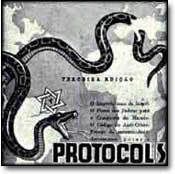 What began with the research of Bar Ilan University’s Professor Yossi Katz in 1997 and his subsequent book “Forgotten Assets” is now a massive online database with information on more than 60,000 Holocaust victims’ unclaimed property. In 2006, the Knesset acted upon the scholar’s findings and established a committee that eventually created the Company for Location and Restitution of Holocaust Victims’ Assets.
What began with the research of Bar Ilan University’s Professor Yossi Katz in 1997 and his subsequent book “Forgotten Assets” is now a massive online database with information on more than 60,000 Holocaust victims’ unclaimed property. In 2006, the Knesset acted upon the scholar’s findings and established a committee that eventually created the Company for Location and Restitution of Holocaust Victims’ Assets.
The assets, most commonly land or dormant bank accounts in Israel, are being sought by the Company so that they can be dealt with justly by being transferred to the rightful heirs. While much progress has been made in acquiring the many funds and lots, the process is ongoing, according to head of the Asset Location and Heir Search division Elinor Kroitoru.
“[In some cases], we have to hold battles in order to bring more assets to the company from entities or bodies that hold them,” Kroitoru said in a phone interview. “Some of the banks here in Israel have not yet paid us for dormant bank accounts, and we’re holding legal proceedings against those that have not taken up this responsibility.”
In the meantime, the process of matching heirs to inheritances continues for that property which the Company already holds. Settlements are pursued from both sides – that is, individuals may search the list at hashava.org.il with as little information as a name or city of residence, and all the while the Company is actively researching potential pairings via vast historical archives in both Israel and Europe.
A form with basic contact information that can be submitted online or by post is all that is required of an applicant who believes he or she has found a relative in the database. Cases can take up to several months to be fully resolved, as there are of course many instances in which multiple heirs are entitled to portions of the property.
“It’s not enough that we find one heir; not always does one receive the entirety,” Kroitoru said. “We have assets with up to 85 individual heirs, and in that case we have to split the property or money.”
The goal, as detailed on the Company’s website, is to honor those that were lost by ensuring that their investments are not squandered or misused. The program has only been active since the spring of 2007, but already more than 10,000 submissions have been received and are being actively researched.
And now that the initial publicity campaign in Israel has garnered massive domestic response, efforts are being turned to North America and then Europe in order to find as many descendants of the Jews who died as possible. Several other areas will be targeted later, including Australia, South America and South Africa, before the unclaimed assets begin to be donated to one of eight programs that commemorate the victims of and educate about the Holocaust.
Just as the Company is not satisfied with finding one heir in a particular case, it will not stop with one sector of potential inheritors.
“We’re very happy with the response, but of course, we would always like to find more people. It’s never enough,” Kroitoru said. “When you consider that there is typically more than one heir to each assets, then you can realize how many people we’re actually looking for.”
http://www.atljewishtimes.com/main.asp?SectionID=108&SubSectionID=254&ArticleID=6671&TM=78419.32
Tuesday, 6 July 2010
Israeli non-profit seeks to bring billion$
Posted @
18:38
![]()
Subscribe to:
Post Comments (Atom)
![[9_10_s22.jpg]](https://blogger.googleusercontent.com/img/b/R29vZ2xl/AVvXsEjTXnQay9wzz0E6nVHrVhaHKoq_zYXDqZjijHlNDQzj90MZzInrCuVX4ciFYCiBfZ7lhlgr2bBhhnl7ddWbhdih5JbXjQYbA605TNyiq046bQqjG2A4S-nHTmh1VBTQSG6tmc23wq47QQ/s1600/9_10_s22.jpg)




No comments:
Post a Comment